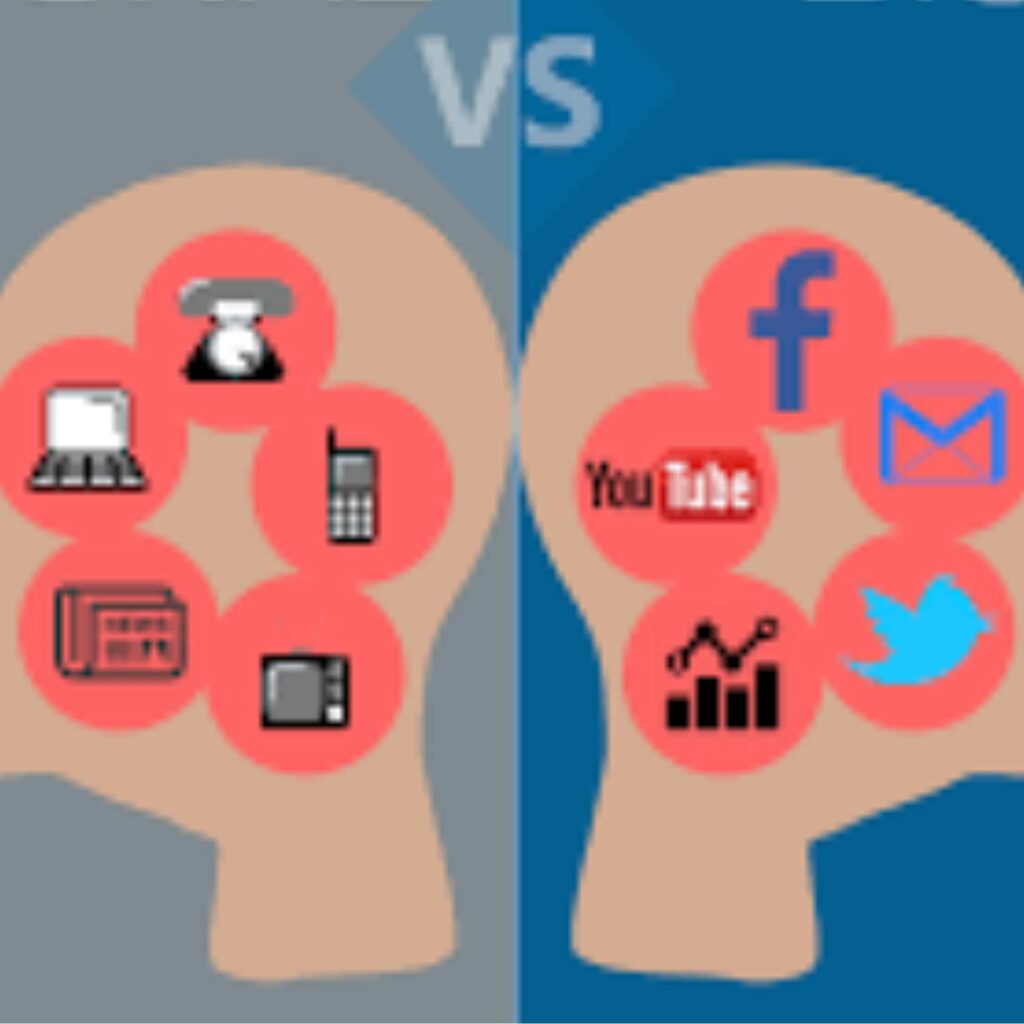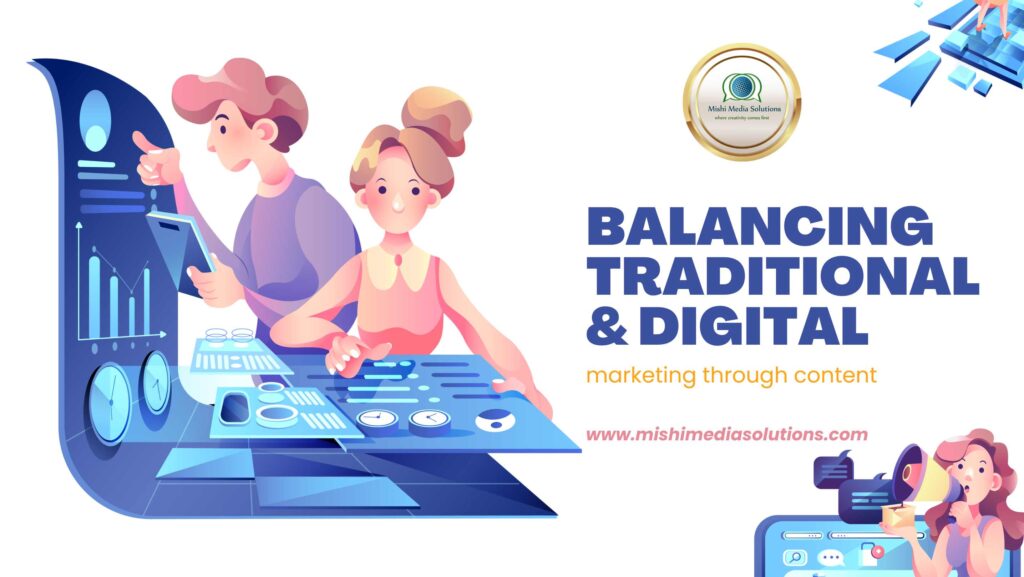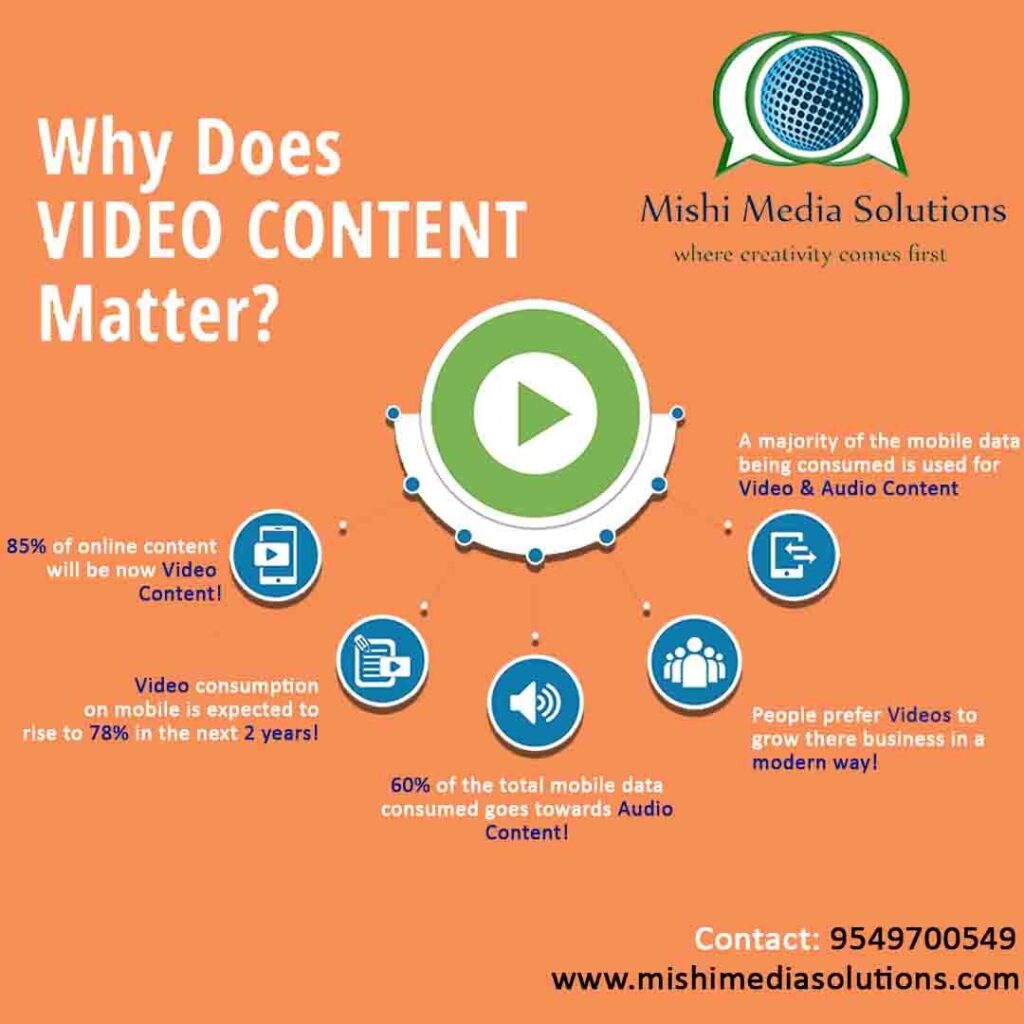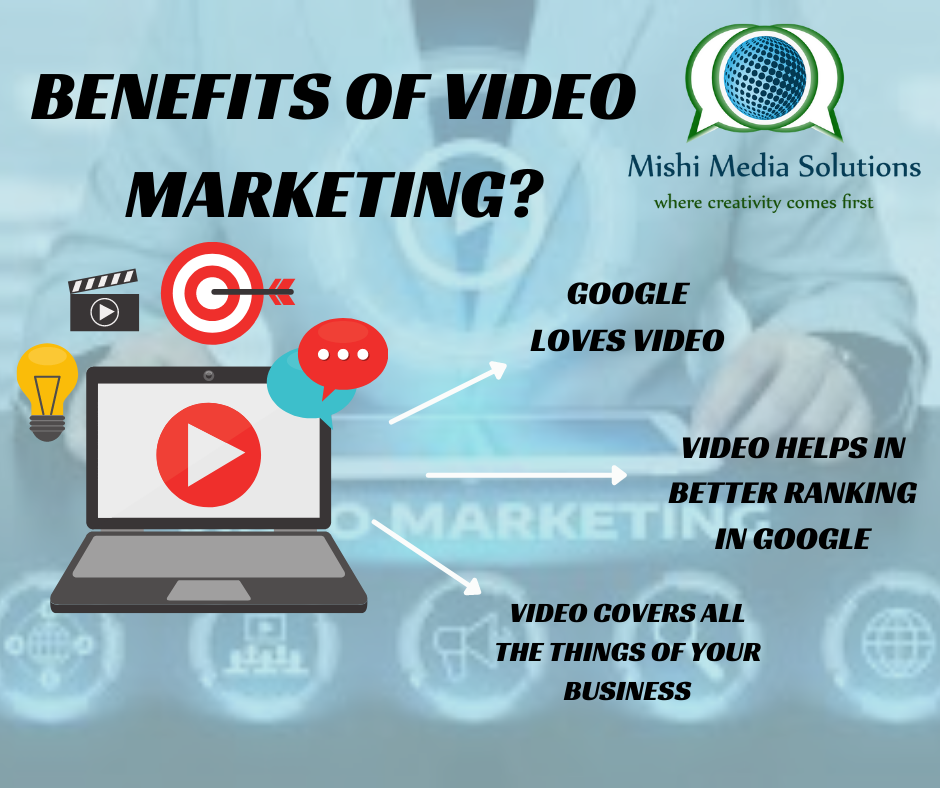
Maintain A Balance Between Traditional and Digital Marketing
In the rapidly evolving landscape of marketing, businesses are increasingly recognizing the power of video content to engage and connect with their target audience. While digital marketing channels have gained prominence, traditional marketing channels still hold value. Achieving the right balance between traditional and digital marketing channels by incorporating video content is crucial for maximizing reach and impact.
See this one of our Latest Work
CALL NOW: 9549700549
In this article, we will explore the benefits of balancing traditional and digital marketing channels and the role of video content in achieving this balance.
1. The Power of Video Content: Video content has become a preferred medium for consumers to consume information, making it a valuable tool for marketers. Videos can deliver messages more effectively, capture attention, and evoke emotions. By incorporating video content into marketing strategies, businesses can enhance engagement, increase brand visibility, and drive conversions.
2. The Role of Traditional Marketing Channels: Traditional marketing channels, such as television, radio, print media, and outdoor advertising, still have a significant reach and influence. They offer opportunities to target specific demographics and engage with audiences who may not be digitally connected. Integrating video content into traditional marketing channels allows businesses to leverage the familiarity and trust associated with these channels.
3. The Importance of Digital Marketing Channels: Digital marketing channels, including websites, social media platforms, email marketing, and mobile applications, have revolutionized the way businesses connect with their audience. Digital channels provide a cost-effective and highly targeted approach, allowing for real-time tracking, analytics, and personalization. Video content on digital platforms can easily be shared, increasing its potential for viral reach.
4. Achieving Balance with Video Content:
a. Cross-Channel Promotion: Use video content to bridge the gap between traditional and digital marketing channels. Promote television or radio commercials on social media platforms, websites, and email newsletters. Incorporate QR codes or shortened URLs in print ads to drive viewers to online video content.
b. Social Media Integration: Leverage the power of social media to amplify the reach of video content. Share video advertisements, tutorials, or behind-the-scenes footage on platforms like Facebook, Instagram, Twitter, and YouTube. Encourage user-generated content by running video contests or challenges.
c. Interactive Video Experiences: Create interactive videos that engage viewers and encourage participation. Incorporate interactive elements like quizzes, polls, or clickable hotspots within the video to enhance user engagement and drive actions.
d. Website Optimization: Embed videos on your website’s landing pages and product pages to enhance user experience and increase conversion rates. Use videos to demonstrate product features, showcase testimonials, or provide instructional content.
e. Email Marketing: Include video content in email newsletters to capture attention and increase click-through rates. Use animated GIFs or video thumbnails that link to the full video content.
f. Measurement and Optimization: Use analytics and insights to measure the performance of video content across different channels. Monitor engagement metrics, conversion rates, and audience feedback to optimize future video marketing campaigns.

Here are a few examples highlighting the differences between traditional marketing and digital marketing:
Print Advertising (Traditional):
Example: Placing ads in newspapers or magazines.
vs. Online Display Advertising (Digital):
Example: Utilizing banner ads on websites or social media platforms.
Television Commercials (Traditional):
Example: Airing a commercial during a prime-time TV show.
vs. Video Ads on Social Media (Digital):
Example: Running video ads on platforms like Facebook or YouTube.
Direct Mail (Traditional):
Example: Sending physical promotional materials via postal mail.
vs. Email Marketing (Digital):
Example: Sending promotional emails to a targeted audience.
Billboard Advertising (Traditional):
Example: Placing an ad on a high-traffic roadside billboard.
vs. Pay-Per-Click (PPC) Advertising (Digital):
Example: Running targeted ads on search engines like Google.
Cold Calling (Traditional):
Example: Making unsolicited phone calls to potential customers.
vs. Social Media Marketing (Digital):
Example: Engaging with the audience through social media platforms to build brand awareness.
Trade Shows and Events (Traditional):
Example: Participating in industry-specific trade shows.
vs. Webinars and Virtual Events (Digital):
Example: Hosting online webinars to reach a global audience.
Radio Ads (Traditional):
Example: Broadcasting promotional messages on radio stations.
vs. Podcast Advertising (Digital):
Example: Integrating ads within popular podcasts relevant to the target audience.
Brochures and Flyers (Traditional):
Example: Distributing printed promotional materials.
vs. Content Marketing (Digital):
Example: Creating and sharing informative content through blogs, articles, and social media.
In-Person Networking (Traditional):
Example: Attending industry conferences for face-to-face networking.
vs. Online Networking (Digital):
Example: Connecting with professionals through online platforms like LinkedIn.
Word of Mouth (Traditional):
Example: Customers recommending a product/service to friends verbally.
vs. Influencer Marketing (Digital):
Example: Collaborating with online influencers to promote products/services.


